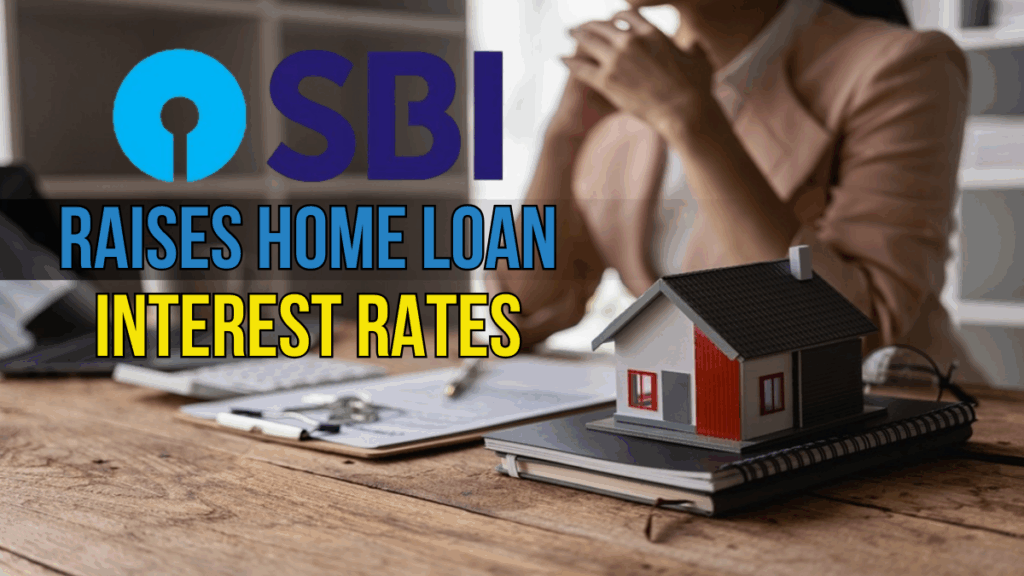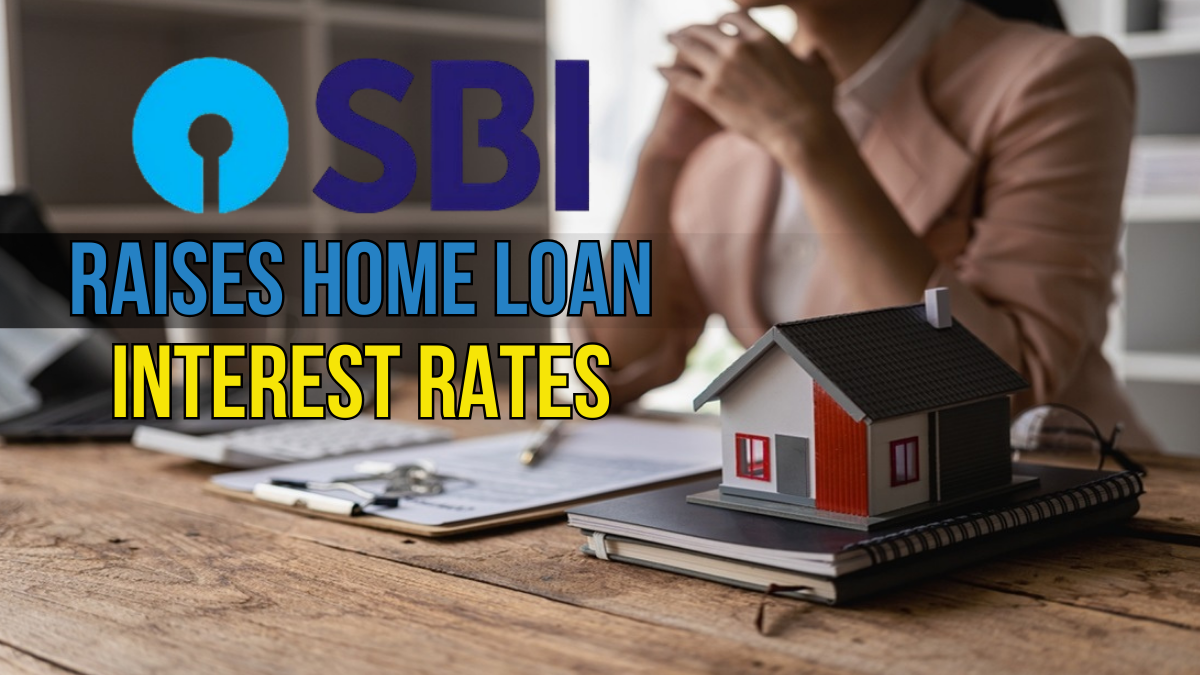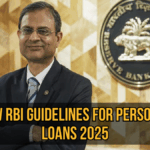Buying a home is already one of the biggest financial commitments for most Indian families. It involves years of savings, careful planning, and the pressure of long-term loan repayments. Adding to this challenge, the State Bank of India (SBI) and the country’s largest public sector bank has increased its home loan interest rates effective from August 1, 2025.

This revision affects both new borrowers and existing customers with floating-rate loans, making home ownership slightly more expensive. Let’s break down the changes, their real impact on EMIs, and what you should do if you are planning to buy or already servicing a loan.
SBI Home Loan Interest Rate-What Changed?
While the Reserve Bank of India (RBI) kept the repo rate unchanged at 5.55%, SBI revised its lending rates independently. The changes mainly impact the upper bands of interest rates across different loan products.
New SBI Home Loan Interest Rates (August 2025)
Loan Type |
Previous Rate |
Current Rate |
|---|---|---|
Regular Home Loan (Term Loan) |
7.50% – 8.45% |
7.50% – 8.70% |
MaxGain Home Loan (OD) |
7.75% – 8.70% |
7.75% – 8.95% |
Top-Up Loan |
8.00% – 10.50% |
8.00% – 10.75% |
Loan Against Property (P-LAP) |
9.20% – 10.50% |
9.20% – 10.75% |
Reverse Mortgage |
10.55% |
10.55% (unchanged) |
YONO Insta Top-Up Loan |
8.35% |
8.35% (unchanged) |
The lower band remains unchanged in most cases, meaning borrowers with strong CIBIL scores (750+) and excellent repayment history may still secure loans at the minimum rate. However, those with weaker credit profiles will face higher rates.
Quick Summary
Key Details |
Information |
|---|---|
Bank |
State Bank of India (SBI) |
Effective Date |
August 1, 2025 |
Previous Repo Rate (RBI) |
5.55% (unchanged) |
SBI Regular Home Loan |
Old: 7.50%–8.45% → New: 7.50%–8.70% |
SBI MaxGain Home Loan |
Old: 7.75%–8.70% → New: 7.75%–8.95% |
Top-Up Loan |
Old: 8.00%–10.50% → New: 8.00%–10.75% |
Loan Against Property (P-LAP) |
Old: 9.20%–10.50% → New: 9.20%–10.75% |
Reverse Mortgage |
Unchanged at 10.55% |
Lowest Available Rate |
7.50% (for top credit scores) |
Official Website |
Impact on Home Loan EMIs
To understand the real cost of this rate hike, let’s look at an example:
- Loan Amount: ₹50 lakh
- Tenure: 20 years
- Old Rate (8.45%)
- EMI = ₹43,233
- Total Payment = ₹1.03 crore
- New Rate (8.70%)
- EMI = ₹44,026
- Total Payment = ₹1.05 crore
Impact:
- Extra EMI = ₹737 per month
- Extra Payment Over 20 Years = ≈ ₹1.9 lakh in interest
Even a 0.25% increase in rates significantly raises the overall cost of home ownership, especially for long-term borrowers.
Why Did SBI Increase Home Loan Rates?
SBI links its loan pricing to two major factors:
- CIBIL Score – Borrowers with strong credit scores can still secure the lower end of the interest band. Those with lower scores may be pushed closer to the maximum rate.
- External Benchmark Linked Rate (EBLR) – Currently at 8.15%, this benchmark allows banks to adjust spreads to cover credit risk.
While the RBI has not raised the repo rate, SBI revised rates to mitigate risk in a growing loan book and ensure financial stability.
Key Considerations for Borrowers
- Existing Borrowers: If your loan is linked to a floating rate (EBLR), expect your EMI to rise slightly.
- New Borrowers: Factor in the higher rate when planning your EMI. Use SBI’s official EMI calculator before committing.
- Loan Transfer Options: You may switch to another lender offering better terms, but check for processing fees, foreclosure charges, and legal expenses before deciding.
- Should You Delay Buying? If your budget is already stretched, waiting for rates to stabilize may be wise. However, if the property is a priority, plan finances carefully and opt for a loan tenure you can realistically manage.
Frequently Asked Questions (FAQs)
1. When did the new SBI Home Loan rates take effect?
The revised rates came into effect on August 1, 2025.
2. Will existing borrowers pay higher EMIs?
Yes, if your loan is on a floating rate, your EMI will increase automatically.
3. Can I transfer my SBI home loan to another bank?
Yes. You can transfer to a lender offering lower rates, but evaluate processing charges and overall cost savings before switching.
4. What is the lowest SBI Home Loan rate now?
The lowest available rate remains at 7.50%, but it is generally reserved for borrowers with excellent credit scores and financial standing.
5. Should I buy a house now or wait?
If your finances are tight, waiting could help. However, if the property is essential, ensure you calculate EMIs with the new rate and plan a safety buffer in your budget.
Conclusion
The SBI home loan rate hike in August 2025 highlights how even a small increase in percentage points can translate into lakh-rupee differences over the loan tenure. While SBI’s move aims to balance its risk and safeguard lending, it increases the financial burden on customers.
Borrowers should:
- Check eligibility for the lowest band of interest rates by maintaining a strong CIBIL score.
- Use EMI calculators to understand monthly obligations.
- Compare with other lenders before committing to a long-term loan.
For those already repaying an SBI home loan, the hike means higher EMIs or an extended loan tenure if you choose to keep EMIs unchanged. Either way, it underscores the importance of financial planning and careful borrowing decisions in today’s rising interest environment.
For More Information Click HERE




